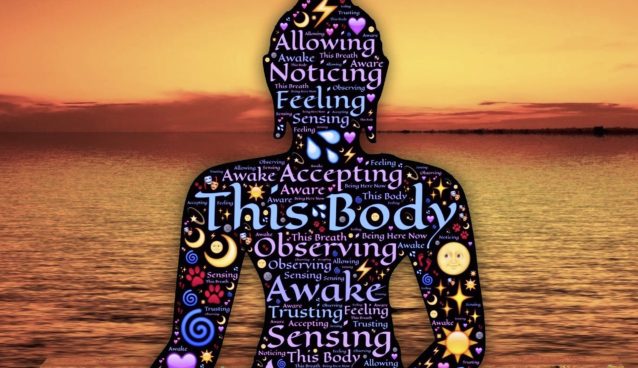Affective Learning

Table of Contents
Introduction
The goal of educational process is the total development of the learners irrespective of the level of education. Total development refers to the development in the three major domains – COGNITIVE, PSYCHOMOTOR and AFFECTIVE. These are the three domains in which the development occurs as a result of the individual’s learning. The learning outcomes in these domains have some distinctive features.
Apart from the learning taking place in the cognitive and psychomotor domains, the learning taking place in the affective domain is related to the changes in the feeling tone like interest, motivation, attitude of a learner.
Bloom's Taxonomy
Benjamin Bloom (1965) developed a taxonomy to differentiate the levels of complexity of learning. He classified learning into three domains, and called it Domains of Learning.
Domains of Learning
- Cognitive Domain
- Affective Domain
- Psychomotor Domain
Cognitive Domain
Cognitive domain pertains to intellectual knowledge, skills and abilities. There are six levels of learning proposed in Bloom’s taxonomy based on increasing levels of complexity.
- Knowledge
- Comprehension
- Application
- Analysis
- Synthesis and
- Evaluation
Affective Domain
Like cognitive domain, affective domain too is divided into a hierarchical taxonomy (Krathwohl, Bloom, Masia, 1964). In affective domain the focus is on emotions and attitudes. There are five levels of the affective domain.
- Receiving (Attending)
- Responding
- Valuing
- Organisation
- Characterization by a Value or Value Complex
Psychomotor Domain
This category of learning involves physical ability. Psychomotor domain has also been classified using a taxonomy (Harrow, 1972). Five levels of the taxonomy are —
- Basic-Fundamental Movements
- Perceptual Abilities
- Physical Abilities
- Skilled Movements
- Non Discursive Communication
Affective Learning : Meaning
Man is a rational animal being endowed with human qualities of love, sympathy, tolerance, co-operation, fellow-feeling and the like. All these relate to the attitudes and values that are useful in the individual’s life.
The development of all such qualities like interest, motivation, attitudes, love, sympathy, tolerance, morality and the like in learners mental state are all come under affective learning.
The term ‘affects’ has a literary meaning of feeling, emotion and having preference for some object, issue, notion and the like. It refers to a type of mental state or disposition tinged with the feelings off love and fondness.
Affect is also treated as a response to different social, political and economic issues in the form of attitudes. Affective learning also takes the forms like humanistic education, moral development, value orientation, character education.
From all these, we can conclude that individual’s affective behaviour or learning is influenced by both emotional intelligence and cognitive learning.
Hierarchical (Level) Order of Affective Learning.
A change in the learner’s affect, since it is concerned with his/her feeling and emotional aspects, cannot be expected to occur in one shot. It may take place gradually in a phased manner.
According to taxonomy of affective learning, the affective learning results in the changes in the learner’s affective behaviour gradually from initial phase of Receiving to the formation of Value Complex through Responding, valuing and Organisation.
According to Krathwohl, Bloom, and Masia, affective domain is divided into a hierarchical taxonomy of five levels.
The levels of the affective domain are –
- Receiving (Attending)
- Responding
- Valuing
- Organisation
- Characterization by a Value or Value Complex
Receiving :- It relates to the learner’s willingness to attend to the stimuli of the affect. It refers to the teaching-learning situation through which the learner’s attention is drawn to the stimuli. The expected learning outcome may be of generating awareness of the learner’s towards the stimuli.
Responding :- it refers to the learner’s active participation in the stimuli of the affective learning. The learner shows willingness to respond and react to the learning stimuli. the learner shows interest to the learning stimuli and voluntarily participates and engages in completing the given assignment.
Valuing :- It relates to the learner’s behaviour in which he/she attaches values to the stimuli of the learning. The behavioural changes may be in terms of the learner’s belief, faith, appreciation and commitment in matters related to learning stimulus.
Organisation :- It relates to the gradual development towards a system of values. The behavioural patterns/demonstration of affective development here may be in terms of appreciating some literary contribution, demonstrating commitment to some social reform measures and belief in some political ideology etc.
Characterization by a Value or Value Complex :- It relates to the highest level of development in the affective domain. The behavioural patterns of affective development here helps the person to an appropriate decision regarding life-cycles. As a result of such stabilization of values and development of a value system the person’s behavioural patterns appears to be more self-reliant and focussed in solving problems as well as in adopting suitable measures in dilemma situations.
Spiral Approach to Affective Learning
The hierarchical order in the affective development in receiving, responding, valuing, organisation and characterization of a value or value system, helps the classroom teachers in adopting suitable methods for developing the learner’s affect using spiral approach as each level has a base of its development in the previous level.




1 thoughts on “Affective Learning”